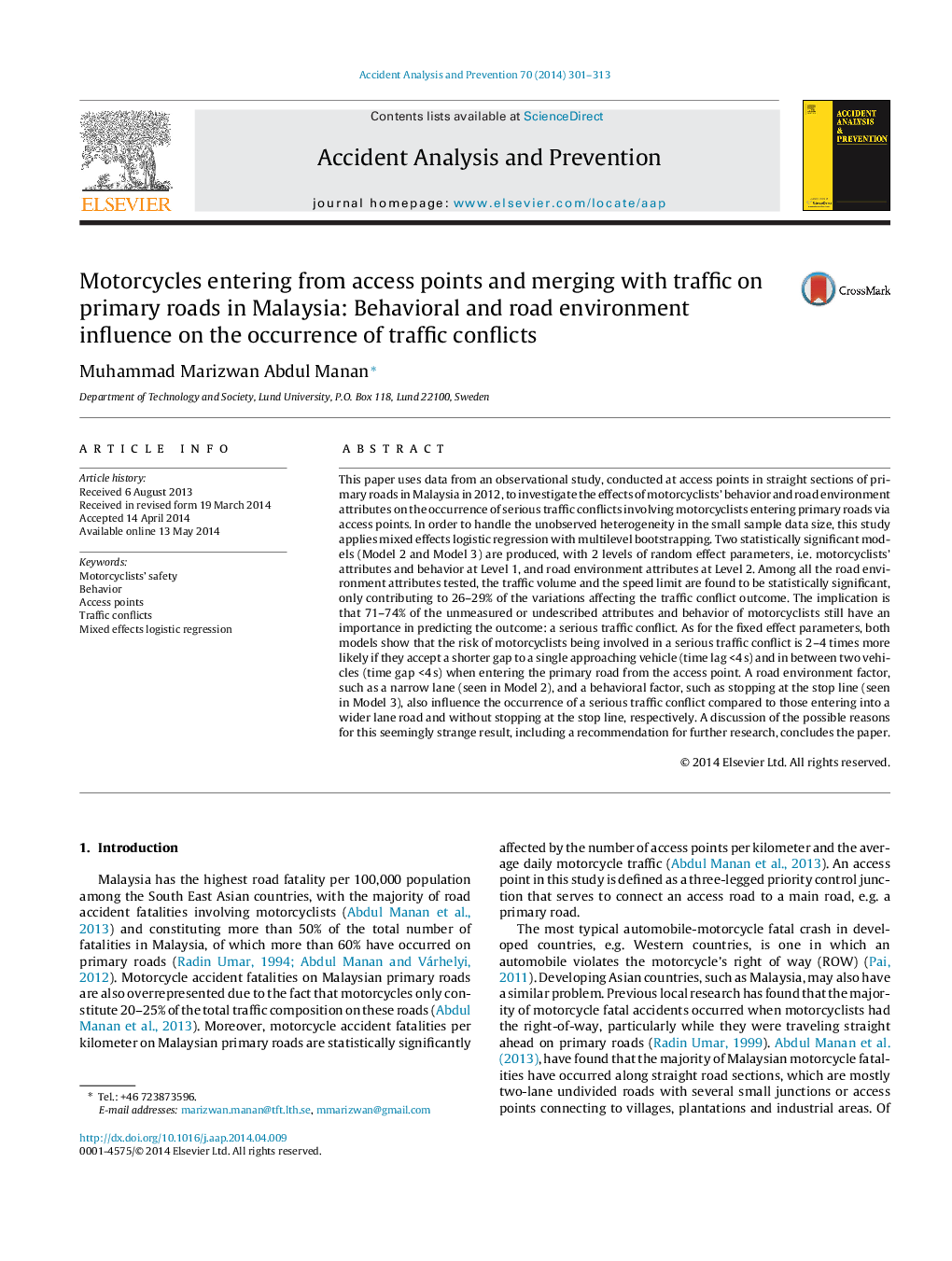| Article ID | Journal | Published Year | Pages | File Type |
|---|---|---|---|---|
| 572327 | Accident Analysis & Prevention | 2014 | 13 Pages |
•Factors affecting serious traffic conflicts involving motorcyclists were investigated.•This study applies mixed effects logistic regression with multilevel bootstrapping.•Motorcyclist's manner of entry affects the outcome of traffic conflict.•Motorcyclist's stopping behavior affects the outcome of traffic conflict.
This paper uses data from an observational study, conducted at access points in straight sections of primary roads in Malaysia in 2012, to investigate the effects of motorcyclists’ behavior and road environment attributes on the occurrence of serious traffic conflicts involving motorcyclists entering primary roads via access points. In order to handle the unobserved heterogeneity in the small sample data size, this study applies mixed effects logistic regression with multilevel bootstrapping. Two statistically significant models (Model 2 and Model 3) are produced, with 2 levels of random effect parameters, i.e. motorcyclists’ attributes and behavior at Level 1, and road environment attributes at Level 2. Among all the road environment attributes tested, the traffic volume and the speed limit are found to be statistically significant, only contributing to 26–29% of the variations affecting the traffic conflict outcome. The implication is that 71–74% of the unmeasured or undescribed attributes and behavior of motorcyclists still have an importance in predicting the outcome: a serious traffic conflict. As for the fixed effect parameters, both models show that the risk of motorcyclists being involved in a serious traffic conflict is 2–4 times more likely if they accept a shorter gap to a single approaching vehicle (time lag <4 s) and in between two vehicles (time gap <4 s) when entering the primary road from the access point. A road environment factor, such as a narrow lane (seen in Model 2), and a behavioral factor, such as stopping at the stop line (seen in Model 3), also influence the occurrence of a serious traffic conflict compared to those entering into a wider lane road and without stopping at the stop line, respectively. A discussion of the possible reasons for this seemingly strange result, including a recommendation for further research, concludes the paper.
